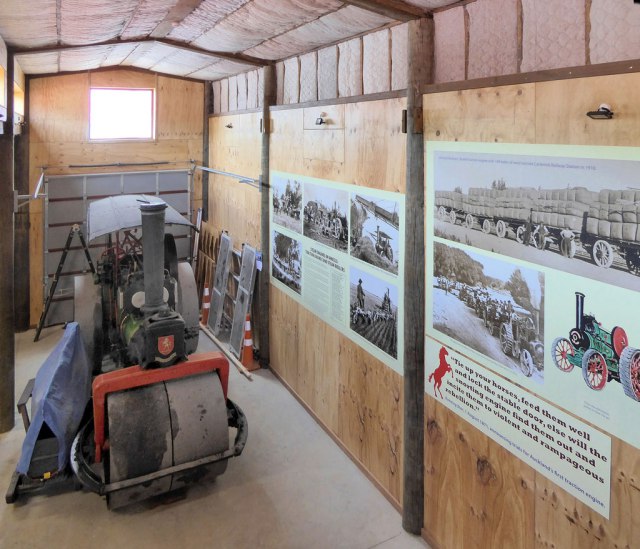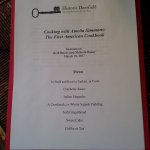
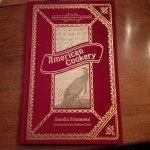
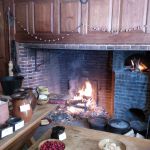
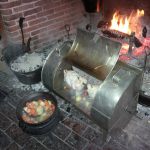
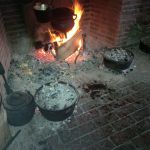
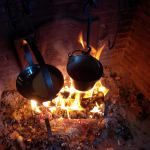
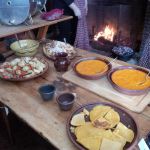
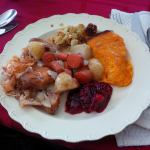
Amelia Simmons may not be well-know amongst the mass variety of modern cookbooks available today, yet she is of critical importance to those who study the history of cookery books in America. I am writing this as a reflection during this week of our country’s Independence Day, where much of what I consumed came from random posts, blogs and tweets touting public selfies of celebrations. During these times I find it comforting to reflect on where we have come from as a country, gender and as modern culinary experts.
Often, I find many historic cookbooks tossed aside at local yard sales and flea markets, many for prices less that a dollar. These books, manuals and pamphlets are tossed aside as being “old” and outdated for modern society. Where others see old, I see as a window into a time and place where I get to step into the author’s shoes and live their life for a moment. This also helps validate my collection/obsession with acquiring these texts before they are gone forever.
This past spring I was fortunate enough to see one of my favorite cookery books come to life in the open hearth kitchen at Historic Deerfield in Massachusetts. This hand-on hearth cooking class was based on the first published American cookbook….American Cookery by Amelia Simmons. The book was first published in 1796 during a time when the cookbooks available to Americans came mainly from England. These European books often added side notes to their original texts to appeal to American buyer by including recipes based on ingredients available within the colonies at that time.
American Cookery is the first American cookbook to pair turkey with cranberries, offer a receipt for Independence Cake and Johnny Cakes using the widely available Indian corn meal. Little is known of Amelia Simmons except her own self-title as “An American Orphan” on the cover of her book. Many have claimed Ms. Simmons as their own as she mentions ingredients available specifically to the Connecticut and New York regions. It is fitting that no one area can claim to have produced Ms. Simmons as she is now remembered as the first American cookbook author, a symbol for the whole country of those who broke away from the norm and claimed independence in all areas of their lives including the dinner table.
My personal experience at Deerfield allowed me to step back in time and comprehend the difficulty of preparing meals with an open hearth fireplace. This is a rare glimpse into the amount of labor and planning one must have had to accomplish the day’s chores and produce a meal that was well-prepared and nourishing for the family. On this day I was charged with preparing the stuffed fowl (chicken) for roasting on the manual rotisserie. The recipe was vague compared to modern standards of precision, yet it gave enough critical information to produce a tender fowl.
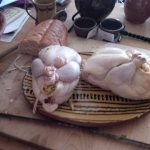
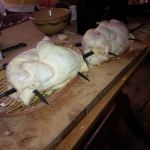
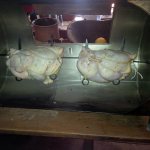

The stuffing consisted of wheat bread, beef suet, eggs, thyme, marjoram, pepper, salt and a gill of wine. The birds where trussed, skewered onto the rotisserie and place towards the fire. Every 20 minutes I rotated the rotisserie manually and basted the birds with salt water, using a whisk brush. These recipes do not come with and oven temperature, nor do they tell how to know when the birds are done other than “hang down to a fteady folid fire….and rosft until fteam emits from the breaft”
As you can see in the pictures above, the final result was magnificent. The chicken was moist, tender and flavorful. Working an open hearth takes patience, attention to the coals of the fire, and physical strength. The day’s experience was hot, dirty and yet so rewarding whence we all gathered around the tables to consume the fruits of our labor. An experience I hope to repeat again in the near future.
©Susan Brassard, [email protected], July 2017
Advertisements Share this:- More




